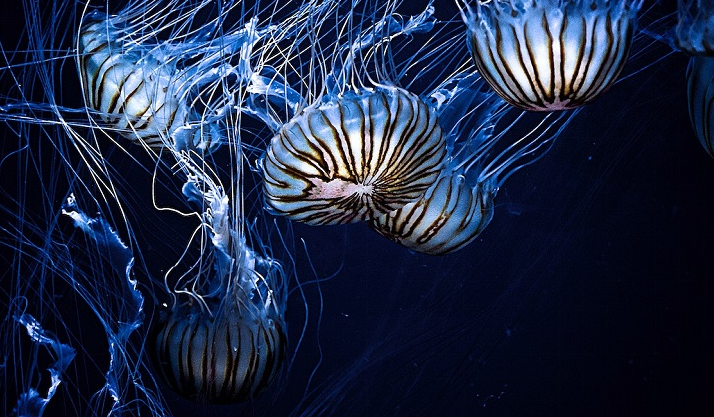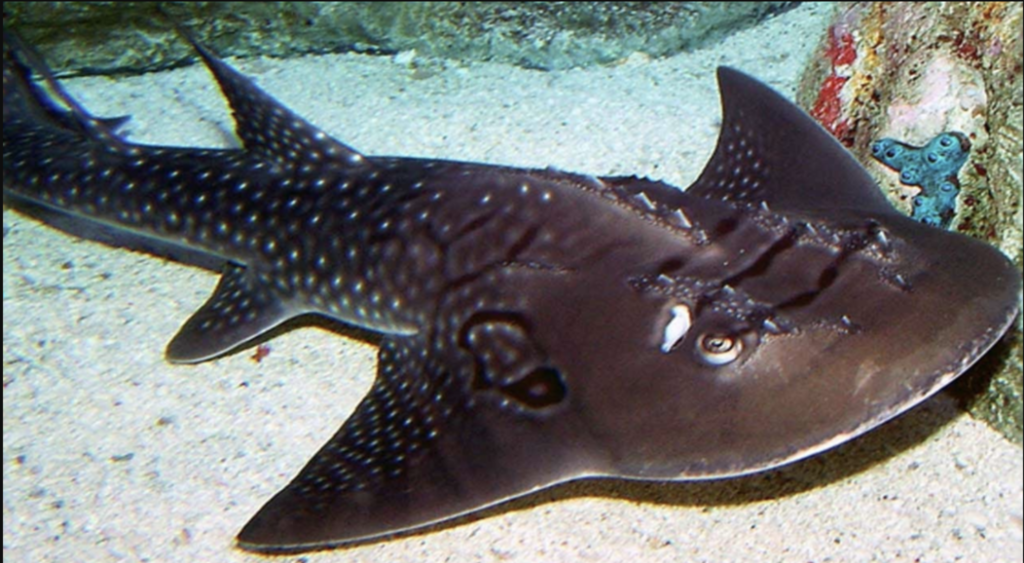1. Box Jellyfish: The Silent Assassin

World Animal Foundation
Box jellyfish are terrifying, but the scariest part is how quietly they go about their business. With their transparent, cube-shaped bodies, they can go unnoticed until it’s too late. Their tentacles carry toxins that can stop the heart within minutes. It’s not just their sting that’s dangerous, but their venom, which can cause a cardiac arrest. Thankfully, there are usually warnings when they’re around.
2. Stonefish: Masters of Disguise

Flickr
Stonefish are experts in camouflage. They look just like rocks, making them easy to miss. Stepping on one can be disastrous, as their dorsal spines inject venom into the wound. The venom can cause intense pain, paralysis, and in rare cases, death. The best defense? Keep an eye out for “rocks” that look a little too lifelike!
3. Cone Snail: Tiny But Deadly
YouTube
This might surprise you, but the cone snail is one of the ocean’s most dangerous creatures. Their beautiful shells can lure you in, but one wrong move and you could be paralyzed by their venomous sting. A single sting can lead to respiratory failure, and it’s often hard to tell you’ve been stung until it’s too late.
4. Blue-Ringed Octopus: Small But Mighty
YouTube
This little creature is easy to spot with its dazzling blue rings, but don’t be fooled by its size. The venom of a blue-ringed octopus is one of the most potent in the ocean. A single bite can leave you paralyzed and unable to breathe. The best way to avoid trouble? Keep a safe distance, and don’t try to pick one up.
5. Sea Snake: A Hidden Threat

YouTube
While they’re not often spotted, sea snakes are highly venomous and found in warm coastal waters around the world. With their elongated bodies and sharp fangs, they can inject venom capable of killing a person in just a few hours if not treated. Sea snakes are typically shy, but a bite is often the result of an accidental encounter.
6. Lionfish: A Prickly Problem

YouTube
Lionfish are visually striking, with their bold, spiky fins and striped bodies. But those spines aren’t just for show. Each one is loaded with venom that can cause extreme pain, swelling, and even paralysis. While they are not aggressive, their venomous spines are easily triggered by curious swimmers.
7. Great White Shark: The King of the Ocean
YouTube
Okay, you’ve probably heard of the great white shark, but did you know they aren’t typically aggressive toward humans? Attacks are rare, and the shark usually mistakes people for seals. Nonetheless, these apex predators should be respected, and avoiding shark-heavy areas is always a good idea.
8. Portuguese Man o’ War: Floating Menace
YouTube
Often mistaken for a jellyfish, the Portuguese Man o’ War is a colonial organism, meaning it’s actually a collection of creatures working together. Its long tentacles can sting and paralyze small fish, and the venomous cells can still fire even if they’re washed ashore. A painful encounter with this floaty creature can leave you with welts and burns.
9. Barracuda: Speedy and Sharp

YouTube
Known for their speed and sharp teeth, barracudas are often spotted in tropical waters. While they’re typically not a danger to humans, their aggressive behavior can become problematic if they mistake shiny objects (like jewelry) for prey. It’s always a good idea to avoid flashy accessories when swimming in their territory.
10. Shark Ray: The Mellow But Menacing Creature

YouTube
At first glance, a shark ray might seem like a gentle giant, but don’t let their laid-back nature fool you. They have venomous spines that they’ll use if threatened. It’s rare to encounter one, but if you do, make sure to steer clear of their tail.
11. Tiger Shark: The Garbage Disposal of the Ocean
Animalia
Known for their large size and voracious appetites, tiger sharks are often found near popular beaches. They’re more likely to bite if something sparks their curiosity. Though not usually aggressive, their powerful jaws can inflict serious injury, so it’s important to avoid swimming in areas where they’re known to hunt.
12. Crocodile: Freshwater Terror on the Edge

YouTube
Crocodiles are usually associated with freshwater, but they can often be spotted near the mouths of rivers where they meet the sea. They are fast, territorial, and can be aggressive. If you’re near an estuary, always stay alert and keep your distance from the shoreline.
13. Mantis Shrimp: Powerful Punches
YouTube
The mantis shrimp may look small and unassuming, but it has one of the fastest and most powerful punches in the animal kingdom. These punches can break glass, and if you happen to get too close to one, it could cause a serious injury. Luckily, they usually stick to hiding in burrows, so you’re unlikely to cross paths unless you’re diving.


